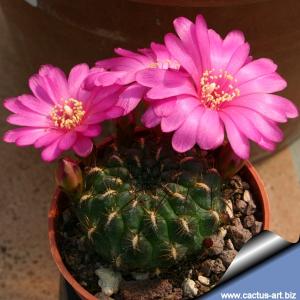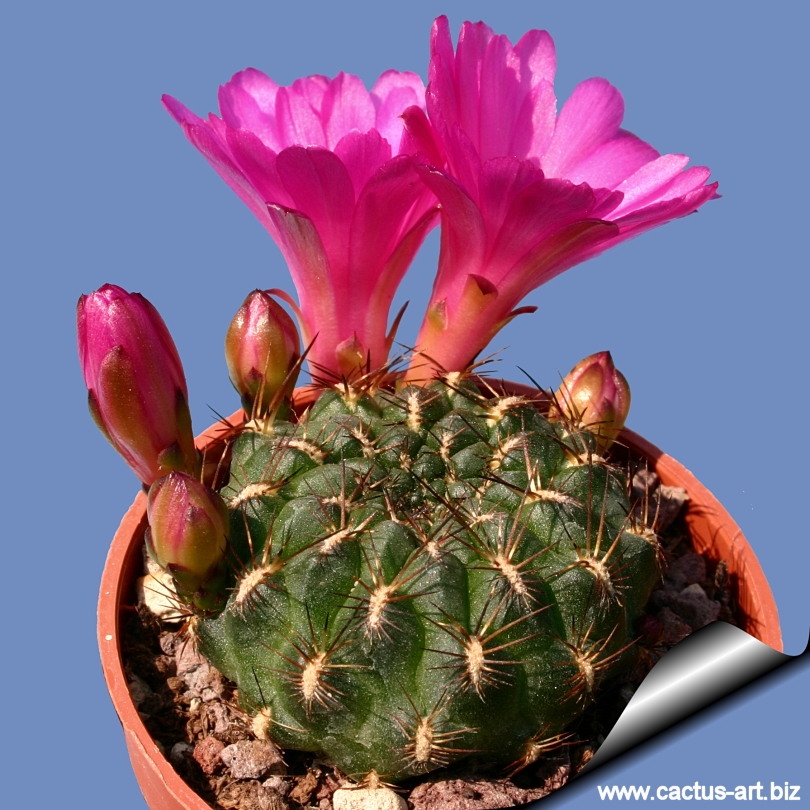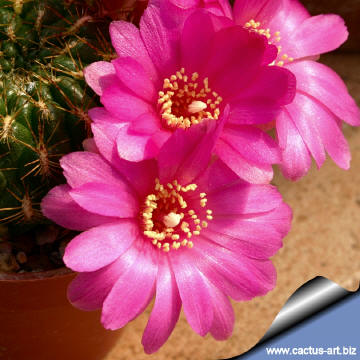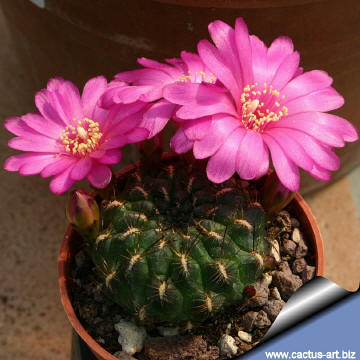-
x
Descrizione
Piccola pianta accestente che forma, soprattutto in coltivazione, gruppi con molte teste. Il clone in vendita produce fiori color magenta brillante. Family: Cactaceae (Cactus Family) Scientific Name: Sulcorebutia steinbachii Werderman 1931 Habitat: Grows mainly on a flat, dry, stony area along the banks of the Rio Lopez, just before the moister zone of the tiraquensis populations. Altitude Habitat: Grows mainly on high altitude, dry, stony habitats often on flats. Altitude 2950 – 3900 m. Conservation status: Listed in CITES Appendix II. Cultivation: S. polymorpha loves a very permeable, coarse mineral soil as well as to be strictly kept dry throughout the winter quiescent period since it is very sensitive to any moisture excesses, To prevent rottenness it is also advisable to surround its root neck by very rough sand or grit, this help a fast water drainage and an appropriate air circulation. Plants are quite frost hardy -5 (-10)° C
| |
| |
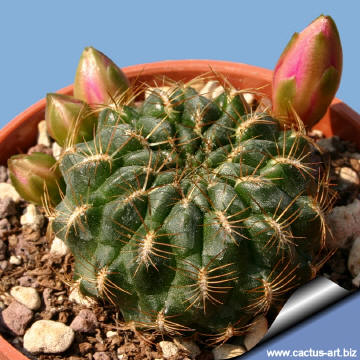 | 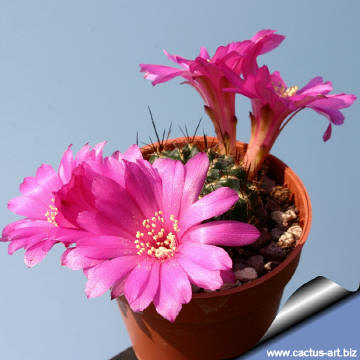 |
Floral tube funnelform with greenish to tan coloured scales. Cultivation: S. polymorpha loves a very permeable, coarse mineral soil as well as to be strictly kept dry throughout the winter quiescent period since it is very sensitive to any moisture excesses, To prevent rottenness it is also advisable to surround its root neck by very rough sand or grit, this help a fast water drainage and an appropriate air circulation. Plants are quite frost hardy -5 (-10)° C | |
| NOTE: This Sulcorebutia is one of the most variable cactus species. The colour of the flower, the spines length, the body shape and pigmentation is extremely variable, even within a population. There are also many localized phenotypes capable of maintaining their separate identity, even though only a few kilometers apart and by former authors considered as separated species and varieties. They are nowadays considered just phenotypes of a highly polymorphic specie. These subpopulations are not only morphologically based but also geographically and can be grouped as follow: Group 1a: Cochabamba to Chapare, northward and eastward to Tiraque
Group 1b: Province Tiraque to Epizana an eastward to Comarapa, 2,800 m-3.000 m.
Group 2: Cerro Tunari-south and east of Cochabamba-Izata to Anzaldo, 3,400-3,900 m
Group 3: West of Cochabamba-Ayopaya, 2,000-2,500 m
Group 4: Around Totora and southward toward Epizana, 2,600-3,000 m
Group 5: A limited area around Pasopaya and eastwards, 2,000 m
| |

